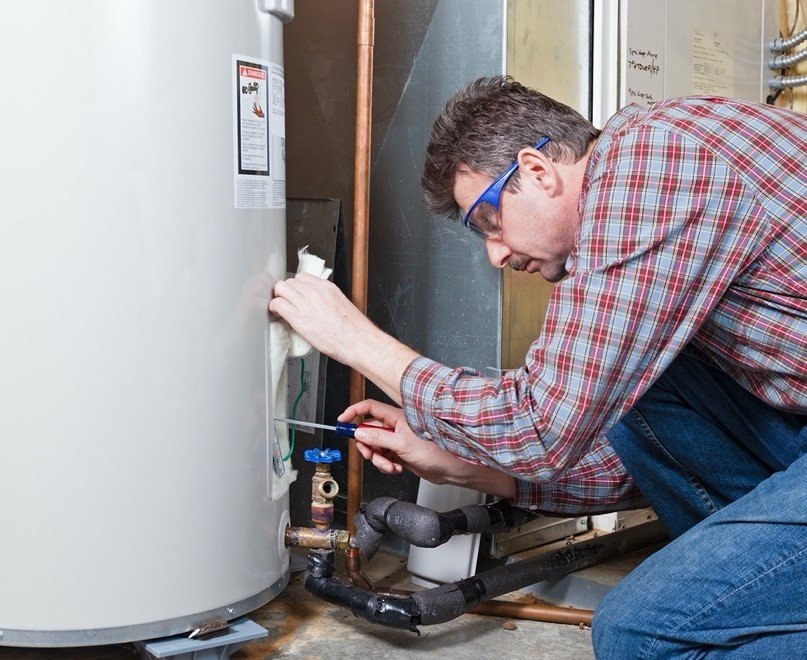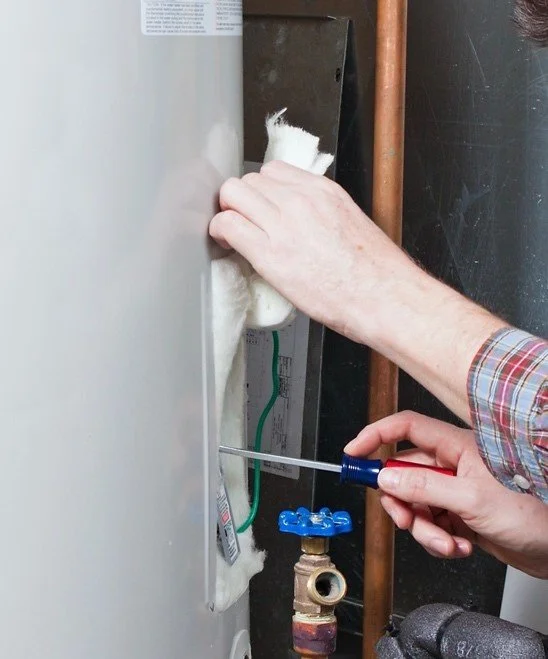We depend on our water heaters to provide us with an unlimited supply of hot water. Hot water is a necessity for showering, washing our hands, clothes, and dishes, and sometimes taking a long, relaxing hot bath. Like the other many appliances in our home, we just expect that it will work forever.
Proper water heater maintenance is important to help optimize its lifespan. When maintained properly, your water heater can last up to 15 years or even longer. Water heater maintenance can easily be a DIY type of activity, but if you’re unsure of what’s needed, hire a professional to get it done correctly. Below are some maintenance tips that we feel will help you get the most life out of your water heater.
Making adjustments during water heater maintenance
Flush the water heater
Over time, sediment can build up at the bottom of the water heater tank. Maintenance that includes regular flushing of the tank will help to clean out sediment.
· Turn off the water supply and all sources of energy, electrical or gas.
· Attach a garden hose to the drain valve at the bottom of the water heater. I use a short 6-foot section.
· Open the valve and let the water run to a drain or into a large bucket.
· Once the sediment is flushed, the water should run clear.
· Return your system to normal operating conditions.
Attaching a garden hose to the water heater drain valve
Adjusting the water temperature
Is your water heater gas or electric? When we inspect your home, our home inspector will document the type of water heater you have on your home inspection report. For you DIY types, look to see if a gas line or an electrical line is going to your water heater. If in doubt, the data plate sticker on the water heater should indicate what type of water heater you have. Items to look for that can help identify what type of water heater you have:
· An electric water heater will likely have an adjusting screw behind a panel near the bottom of the unit.
o Turn the power to your water heater off before removing the panel covers and making any kind of adjustments.
· A gas water heater will have a thermostat control near the bottom of the unit. Simply turn the knob to your desired heat setting.
General locations for electric and gas water heater temperature adjustments
Inspect your water heater for leaks
Your home inspector will check your water heater for any signs of leaking. You can simply do the same when performing your water heater maintenance.
· Inspect the water lines and valves coming to and from the water heater.
· Look for water or stains and corrosion at the water heater's top, sides, and bottom.
· Check to see that the drain valve is securely closed and not leaking.
· Open and close the Temperature and Pressure Relief Valve (TPRV), making sure that it is not leaking.
· If you find any leaks that you can’t easily resolve, call a professional.
Money-saving tips
· Set the water heater temperature as low as possible, yet comfortably maintains your hot water needs. Lower temperatures help keep children safe from scalds or burns.
· Use “vacation mode” or the lowest setting if you are going on vacation or if your home is seasonal, such as in the case of snowbirds or the cabin up north.
Summary
Hot water in your home is essential to your comfort and health. Water heaters don’t last forever, and they can be quite costly to replace. Taking the time to ensure your water heater is running properly can help extend its life and save you money. If you are not comfortable performing these maintenance items, hire a professional.
At HomePro Inspections, our home inspectors are trained to inspect all areas of your home. Any issues found with your water heater are documented in your home inspection report and recommended for resolution by a qualified professional.
Visit our website to learn more or to schedule your home inspection in the Rochester, Owatonna, and Faribault, MN areas. You can contact us today at (507) 202-8942 or use our online “Schedule Now” feature to schedule an appointment.



